
rememory
kinkofa is an organization on a mission to make it easier than ever to uncover family history with content, community, and DNA insights for the Black community specifically.
This is a unique experience for the members of this community because DNA and official documentation alone does not paint a clear picture of a person’s family history. A big part of African American History is passed down through stories - what anthropologists and historians call “oral history.” Our client wanted us to focus on this element of historical research - with advancements in transcription technology and keyword tracking technology in mind.
rememory is an oral history keeper for the Black community in America. It invites its patrons, curious about their ancestry to interview living relatives to keep their history alive and potentially find and connect kin-members.
The Big Picture
🧑🏾💼 My Role: Project Lead and Head UI Designer on a four person team
🏃🏾 Duration: 4 week sprint
🧑🏾🤝🧑🏾 Audience: The Black Community in America
🧑🏾⚕️ Stakeholder Opportunity Statement: Client project for kinkofa, a community dedicated to helping members of the Black community record their family history, connect with their ancestry, and find their kin.
Our Client
kinkofa is an organization on a mission to make it easier than ever to uncover family history with content, community, and DNA insights for the Black community specifically.
This is a unique experience for the members of this community because DNA and official documentation alone does not paint a clear picture of a person’s family history. A big part of African American History is passed down through stories - what anthropologists and historians call “oral history.” Our client wanted us to focus on this element of historical research - with advancements in transcription technology and keyword tracking technology in mind.
We started our Design Process by interviewing seven individuals in the Black Community, most of which wished to connect with their history and ancestors. We also did a lot of secondary research to be aware of the difficulties faced by the Black community in particular endeavor.
Research Insights from Readings
Relying only on written records (i.e. compilation of archives of state institutions) can be limiting.
They primarily include privileged elite and bureaucratic perspectives.
There needs to be more emphasis on Oral History in order to build complete stories and narratives for Black Americans.
“Ethnicity is a sociocultural factor and it changes over time.”
There are limitations with the companies that provide DNA test for Genealogy research databases.
DNA tests provide more detailed results for people of European descent.
Interview Insights
4 out of 7 interviewees were worried about finding something that can make them upset during the family history research.
All interviewees said that talking to family members is the main method of research.
6 out of 7 interviewees expressed their curiosity about their ancestors and wanted to create connections between generations.
4 out of 7 interviewees said that storytelling is an important communication method within their family.
Who We Are Designing For
We needed to emphasize and highlight that our primary user doesn’t need to be super tech savvy to use this solution.
It was important for us to keep in mind that everything needed to be kind of guided and intuitive to someone who maybe doesn’t want to use an app and has in the past really been using paper and pencil. We also recognize due to the heavily personal narratives that are being recorded that the application should emphasize its commitment to privacy.
What’s Out There
The competitors that exist in the market have features that only meet partial needs of someone like Joy.
Transcription technology can allow users to find commonalities in stories & save text files rather than audio files or save both simultaneously without having to take out three separate tools: a page with questions, a notebook for answers, and a video recorder - maintaining all of these accounts across multiple notebooks or audio files can be arduous. And because this particular demographic hasn’t been centered in the existing applications - our product would need to meet the needs by combining the technological capabilities that are utilized by different existing applications for different purposes.
Addressing All Interests
It is true we mapped out where our solution sits in the market - we identified how other services were limited when it comes to meeting the Black Community’s needs, and yet looking at family history apps made us internalize the patterns they demonstrated, which lead to:
FEATURE CREEP
FEATURE CREEP
We were originally too focused on what other family history applications did - and chose files and profiles similar to a “family tree” in order to illustrate the relationship between family members- however this ignores a key research finding - not all kin is blood related - and not all “family” can be defined using tree relationships & one of the reasons the Black Community needs a different type of tool to explore their pasts is because the current offerings define kin and family in a Eurocentric way. We needed to revisit our MVP -
Not Just Feature Creep
This isn’t simply future creep. It was about looking too closely at the competitors out there, and thinking that all the features in those applications were relevant to this case.
I think that, even though we spent a lot of time reading material about the Black Community. The client really emphasized that the straightforward “marriage” “bloodline” “offspring” model of family is Eurocentric. And it may not be what family looks like or means to other communities. And this is where I think user research is really important and also empathizing with your users because we needed to incorporate the ability to define kinships in your own terms for our users & not just provide a typical template.
Going Back to the MVP
An MVP or Minimal Viable Product is important . We had prioritized features aligned with our users and client and the features below were in the “Must Have” category. A “Family-Tree View” was not a part of the MVP. But because it was a ‘view’ the team did not see it at a feature , but while wire-framing the team did feel there were many considerations and functionalities within the view, but because of our research findings and MVP of being an oral history tool we decided to abandon this feature and focus on the Must Have and Should Have Features that aligned with the core purpose of the product.
The Most Important Features

Filing System

Customizable Privacy Options

The Ability to make transcriptions

Ability to Edit Transcription

The Ability to Record Audio
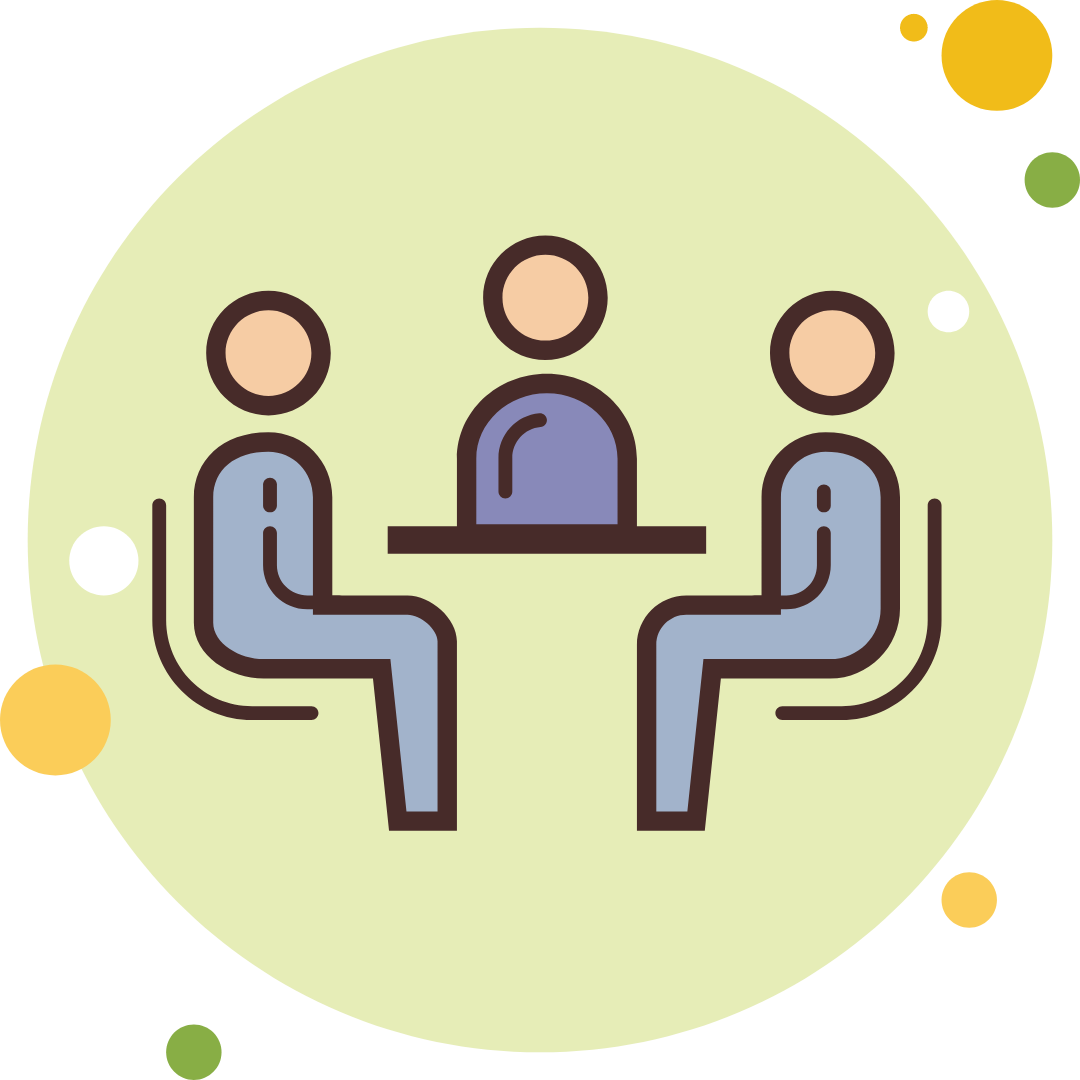
The Ability to Create Groups

A customizable Interview Guide

Having a Library of Resources
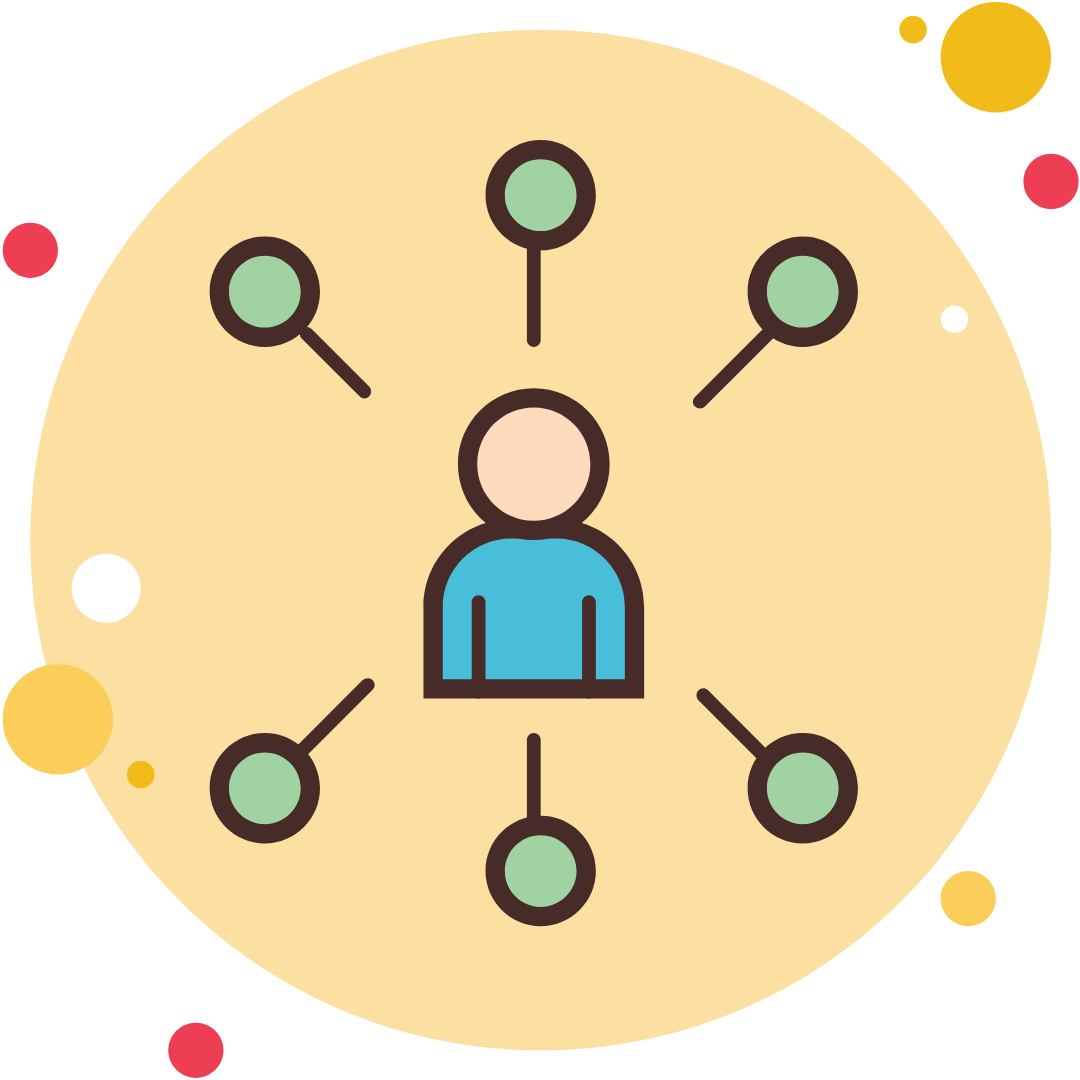
The Ability to Share
Sketches
Testing the Wireframes
The greyscale wireframes were iterated on multiple times. It was necessary for us to embody the role of the user who is interviewing their relative - who may be a bit older, but we also needed feedback from outsiders to help consolidate steps so that the whole process wasn’t arduous - but intuitive.
Home
Making a File for a Kin Member
Record/Pause Buttons
Design Influences
These were design influences provided by the client - this was the first time I had worked with clients that had a set vision for how their product should look & what the essence the product should embody. Based on their guidance we selected a design system with this color scheme, buttons that were approachable and intuitively labeled - and language that guided the user without employing a tutorial- which many users skip through.
The Final Prototype
After two low fidelity greyscale wireframe usability tests. I used brand color and inspiration mood-boards from the client to create a final prototype - prioritizing accessibility for inter-generational use.
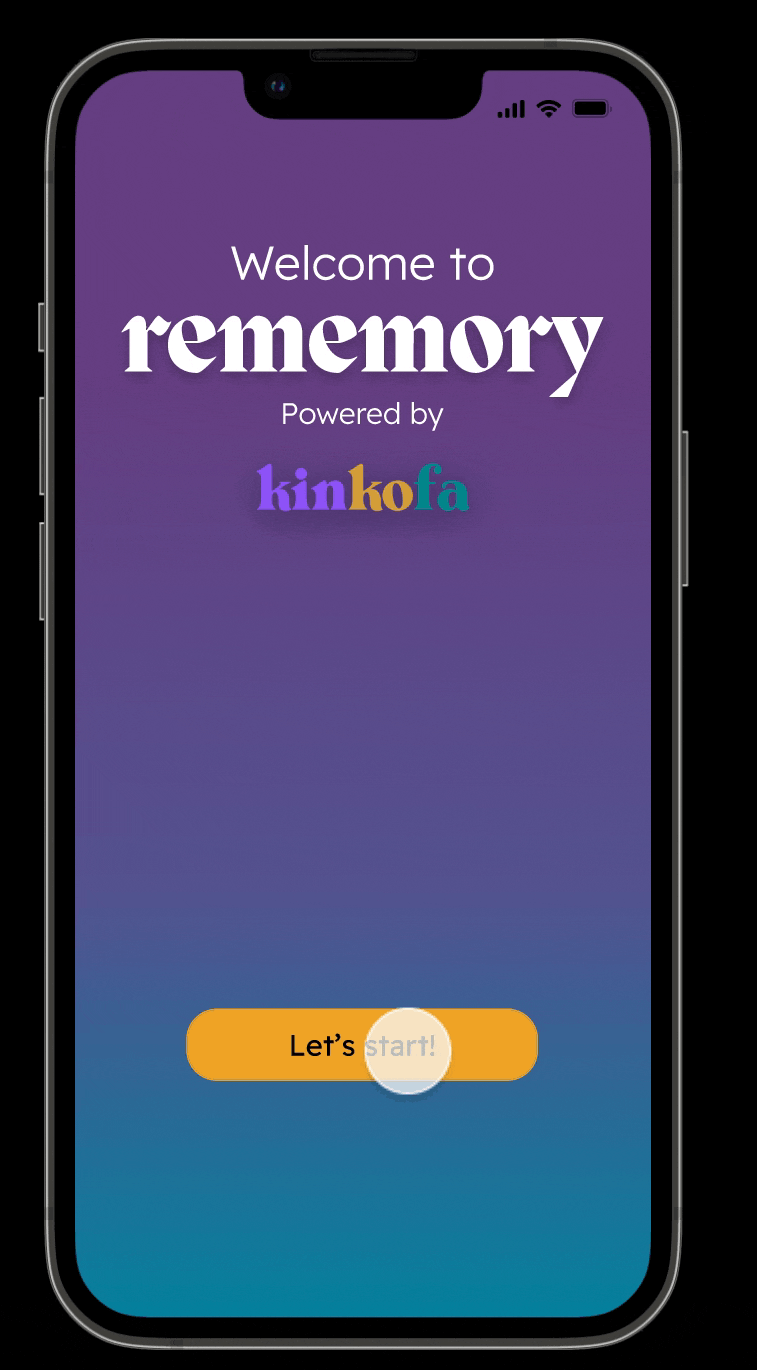
The Home Screen tested very well
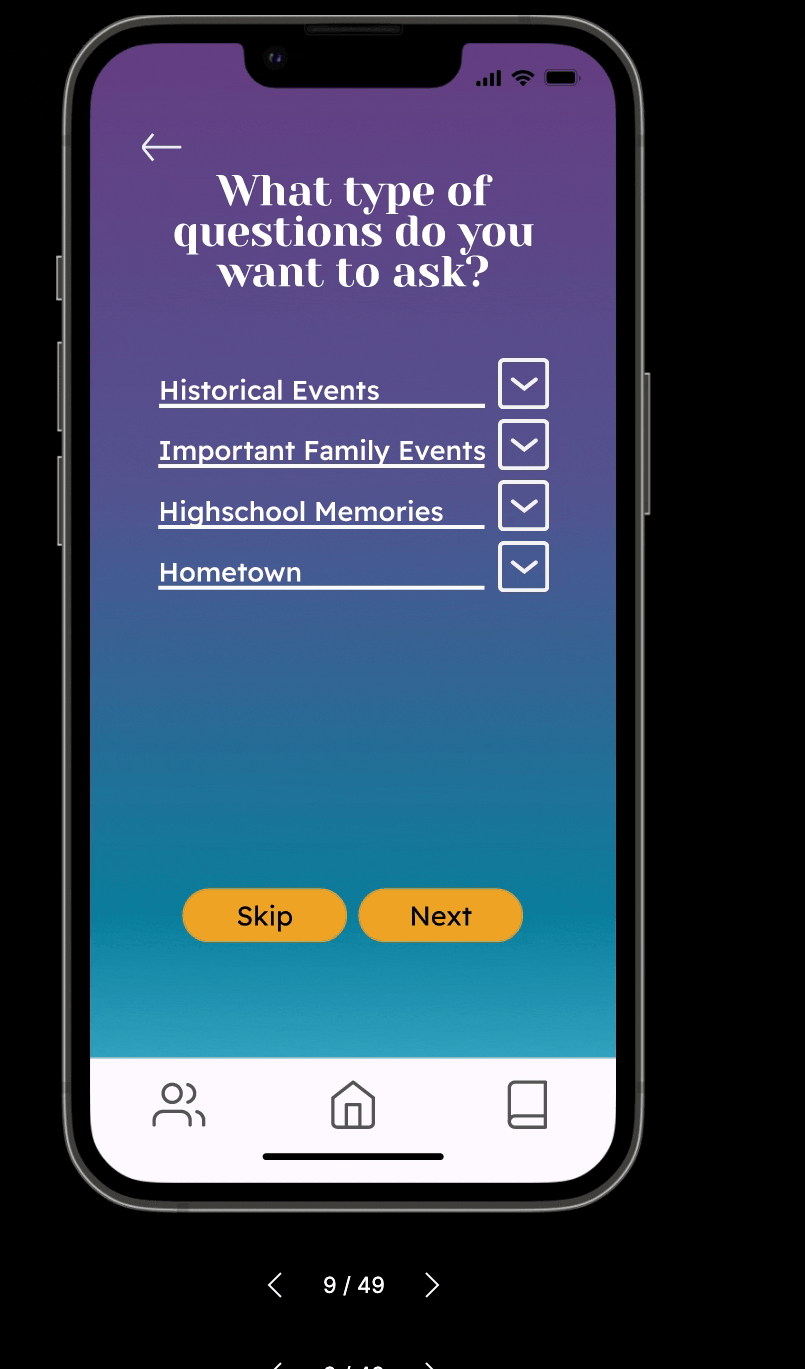
One note received was that the words in the questions create a reaction by checking the box, this may be fixed by moving the box to the right or making them smaller - more like traditional checkboxes
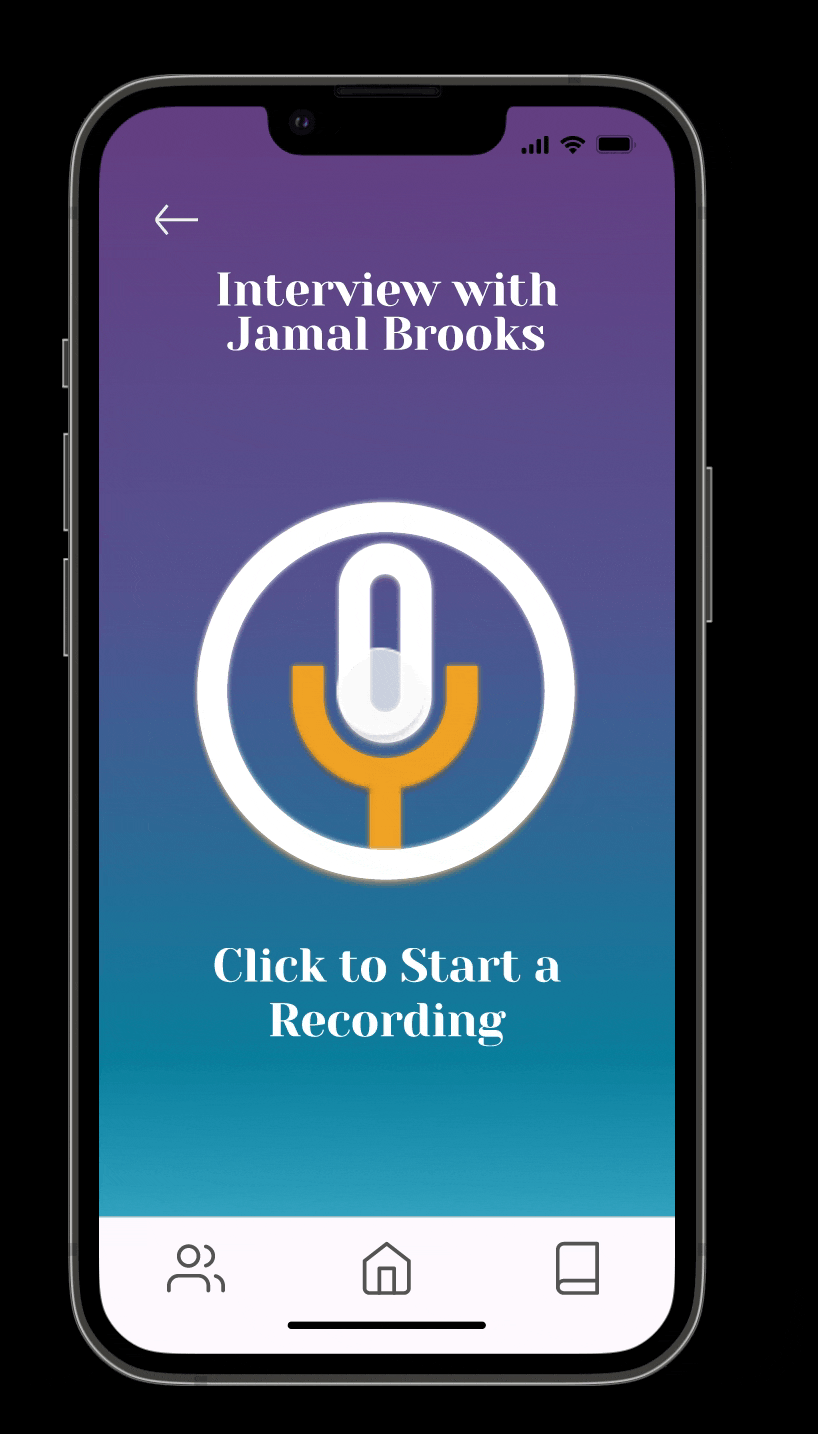
This interaction is to prepare the user for the recording that would begin. One tester wanted to be able to go through the questions out of the order they appear in.
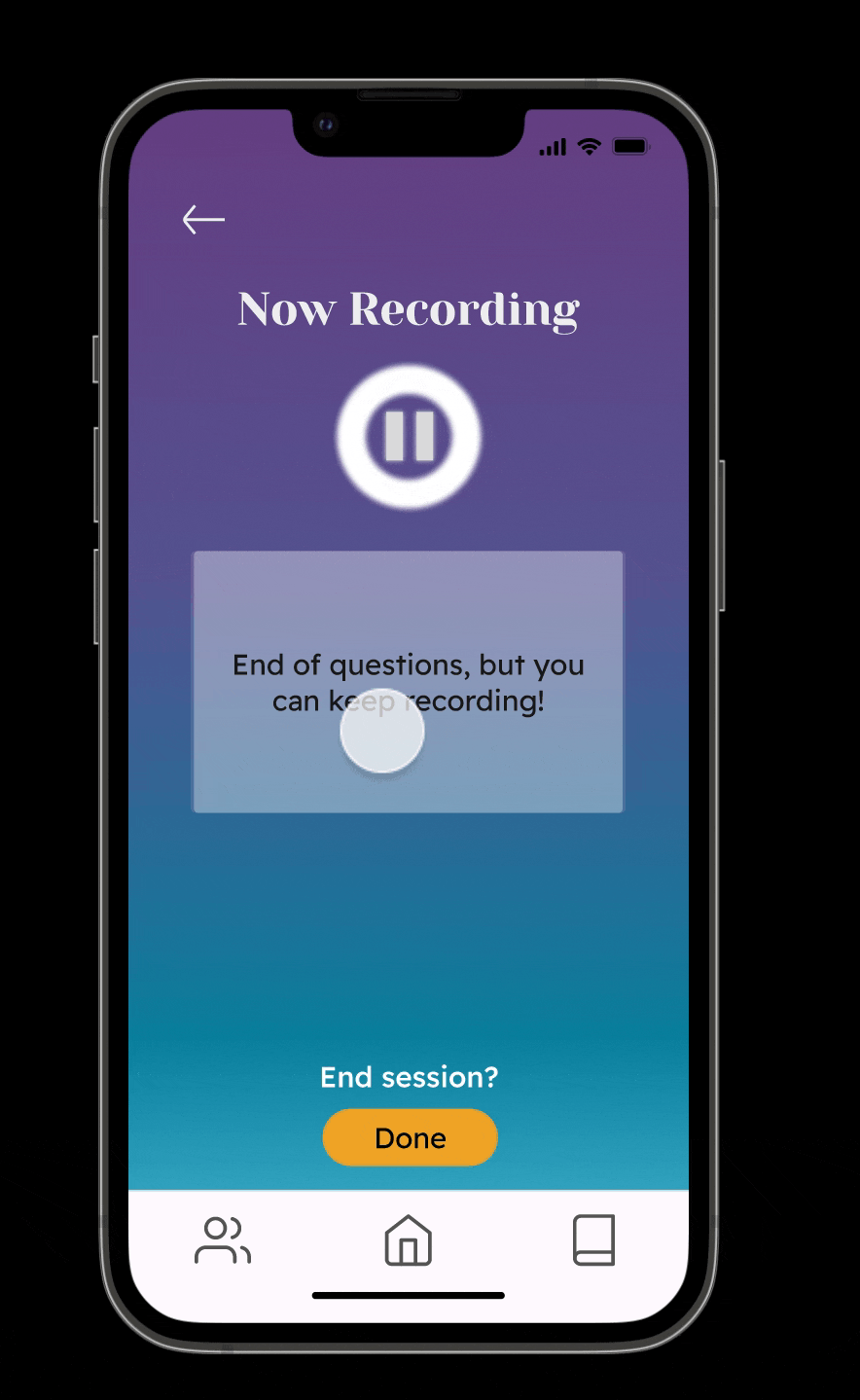
Transcription technology still takes some time to load, however, the waiting should not give people the fear that the recording has been erased if someone exists out by accident.

The sharing options could use some UX writing to be a bit more concise, but also descriptive of that each option is in terms of privacy, this can be done with a "more info" feature in the future
Accessibility Testing
For our UI, we wanted to ensure our text would be readable for users by adhering to WCAG (Web Content Accessibility Guidelines) standards.
For reference, the Guidelines include:
Level A: Minimal Compliance (difficult for physically challenged people to use)
Level AA: Acceptable Compliance (most organizations strive to achieve this level at the very least).
Level AAA: Optimal Compliance (app is considered accessible to the max number of users).
We used a Figma Plugin (A11Y) to monitor and regulate color contrast and fonts to make sure the prototype was compliant with Level AAA.
Next Steps
If I were to revisit this project, I think I would clean up some spacing in the final prototype - employ customized illustrations & icons - and rework the UX writing to be as clear as possible before testing it again.
With current leaps & bounds in transcription technology via solutions like otter & adobe premier pro’s transcription plug-ins. Studying the layout of these in particular can be beneficial in conveying the primary functions to a development team.
Furthermore, AI powering shared transcripts can construct whole narratives around shared stories - find discrepancies, and also links to other people’s shared personal experiences -imagine a Black grandfather recalling an event such as a wedding in 1967 at Tampa between two old highschool friends- could - if this is utilized across the United States - potentially finding the story from those friends’ perspective- & thereby extending your kin network in unexpected ways.






